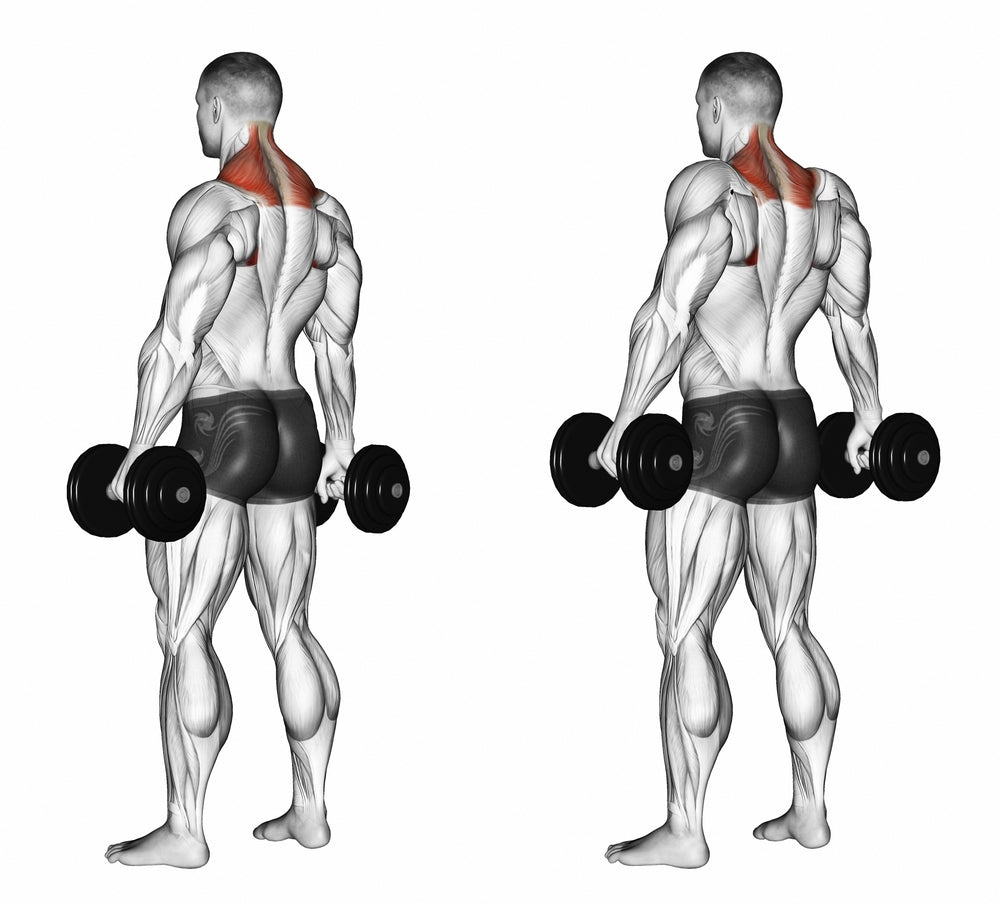Exercise Anatomy
Shoulder Shrug
The Shoulder Shrug is a simple yet effective exercise designed to target the trapezius muscles, promoting upper back and neck strength. Its simplicity allows for quick integration into any workout routine, making it an efficient way to enhance posture and shoulder stability. Incorporate Shoulder Shrugs for a brief yet impactful session that can contribute to a strong and well-defined upper body.

Major Muscles and Actions Involved
The Shoulder Shrug primarily involves the joint action of shoulder elevation, where the shoulders move upward towards the ears. This movement engages the trapezius muscles, specifically the upper fibers, as well as the levator scapulae. These muscles work together to lift the shoulders, making the Shoulder Shrug a focused exercise for improving upper trapezius strength and overall shoulder stability.

Sports Uses
The Shoulder Shrug is particularly beneficial for athletes involved in sports that require robust shoulder and neck strength, as well as overall upper body stability. Weightlifters and powerlifters, for instance, can leverage Shoulder Shrugs to enhance their ability to support heavy loads during exercises like deadlifts and squats. Additionally, athletes participating in sports like rugby or American football, where strong neck and upper back muscles contribute to tackling and blocking, can find value in incorporating Shoulder Shrugs into their training regimen. Including this exercise can improve resilience and performance in activities demanding upper body strength and stability.
Exercise Tips
- Focus on Controlled Movement: Execute Shoulder Shrugs with a controlled lifting motion, emphasizing the contraction of the trapezius muscles. Avoid excessive or jerky movements to ensure effective muscle engagement.
- Full Range of Motion: Elevate the shoulders as high as comfortably possible during each repetition to maximize the range of motion. This ensures optimal activation of the upper trapezius fibers.
- Moderate Weight Selection: Choose a weight that allows you to maintain proper form and control throughout the movement. Avoid overly heavy weights to prevent unnecessary stress on the neck and shoulders.
- Neutral Grip: Adopt a neutral grip with hands positioned shoulder-width apart. This grip minimizes stress on the wrists and allows for a more natural and comfortable movement pattern.
- Explore Variations: Experiment with variations such as barbell shrugs, dumbbell shrugs, or machine shrugs to target the muscles from different angles. This variety can enhance overall trapezius development.
Bonus Tip: Consistent Breathing: Inhale before lifting the shoulders and exhale as you lower them. Maintaining a consistent breathing pattern helps stabilize the core and supports better control during Shoulder Shrugs.

Want to Learn More?
Try our premium ebook, Exercise Anatomy and Biomechanics: Ultimate Guide.
Satisfaction guaranteed.
